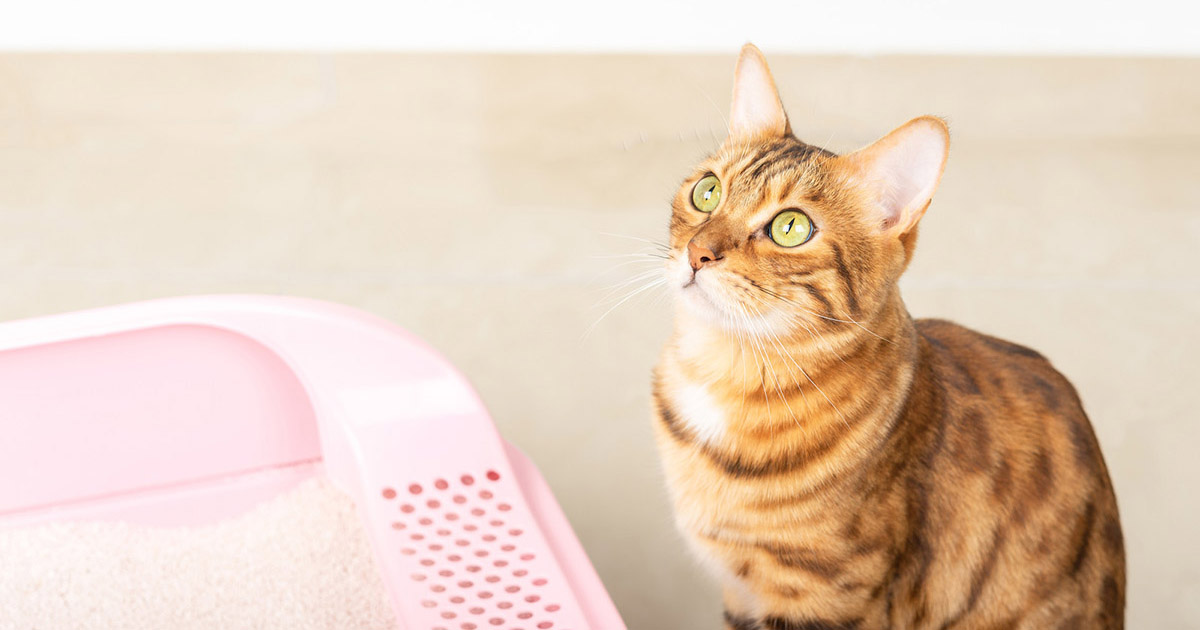Prevent Bathroom Disasters: Don't Flush Cat Poop Down Your Toilet - Professional Guidance
Prevent Bathroom Disasters: Don't Flush Cat Poop Down Your Toilet - Professional Guidance
Blog Article
They are making several good observations on How to Dispose of Cat Poop and Litter Without Plastic Bags as a whole in this post which follows.

Introduction
As feline owners, it's important to bear in mind how we deal with our feline friends' waste. While it might seem practical to purge feline poop down the bathroom, this method can have damaging effects for both the setting and human health.
Environmental Impact
Purging cat poop introduces dangerous pathogens and bloodsuckers into the water, presenting a considerable risk to water environments. These contaminants can negatively affect marine life and concession water high quality.
Health Risks
Along with environmental problems, flushing cat waste can likewise pose wellness risks to human beings. Feline feces might contain Toxoplasma gondii, a bloodsucker that can trigger toxoplasmosis-- a possibly extreme health problem, especially for expecting ladies and individuals with weakened body immune systems.
Alternatives to Flushing
Luckily, there are much safer and much more responsible means to take care of pet cat poop. Think about the following choices:
1. Scoop and Dispose in Trash
One of the most usual method of disposing of feline poop is to scoop it into an eco-friendly bag and throw it in the trash. Make sure to utilize a dedicated trash inside story and dispose of the waste without delay.
2. Usage Biodegradable Litter
Choose eco-friendly pet cat litter made from products such as corn or wheat. These clutters are environmentally friendly and can be securely taken care of in the garbage.
3. Hide in the Yard
If you have a lawn, consider burying cat waste in a marked area away from vegetable yards and water resources. Be sure to dig deep enough to avoid contamination of groundwater.
4. Install a Pet Waste Disposal System
Invest in a pet dog waste disposal system specifically made for feline waste. These systems use enzymes to break down the waste, reducing smell and environmental influence.
Final thought
Accountable animal possession extends beyond providing food and sanctuary-- it likewise entails appropriate waste monitoring. By avoiding flushing pet cat poop down the toilet and choosing different disposal methods, we can lessen our environmental footprint and shield human wellness.
Why You Should NEVER Flush Cat Poop (and/or Litter) Down Your Toilet
The Problem with Litter
The main function of litter is to solidify and adhere to your cat’s waste. While this makes litter excellent for collecting cat poop and urine, it’s also the exact property that makes it a nightmare when flushed down the toilet.
Cat litter can and will clog pipes. There is non-clumping litter, but it’s still quite heavy and can build up in pipes. This is true even of supposed “flushable litter.”
The problems only compound when the litter is already clumped into cat waste. Toilet paper is among the more flushable things, and even too much of that will clog a toilet.
The Problem with Cat Poop
Sewers and septic systems are designed with human waste in mind. The microbes that help break down human waste don’t work on cat waste. Additionally, cat poop plays host to the parasite Toxoplasma gondii.
When flushed, this parasite can enter the environment in places it was never meant to, posing a risk to pregnant women, their unborn children, and other people with compromised immune systems. While it might not seem possible, flushing cat poop can indeed introduce this parasite to the public water supply.
These reasons are why, even if you’ve trained your cat to go on the toilet and flush, which is possible, it’s still not a good idea. Also, pregnant women and the immunocompromised shouldn’t change litter, either.
How to Handle Litter
The best way to handle litter is to simply put it in a plastic bag and place it in the trash. Avoiding environmental risks and possible plumbing damage is worth the extra effort.
You can also invest in devices that seal away your cat’s waste in a separate compartment, so you don’t have to change the litter nearly as often. They’re also safer for pet owners because they limit the possibility of Toxoplasma gondii exposure.
Disposing of litter the old-fashioned way will ensure you won’t have to worry about any issues that flushing the waste can potentially cause.
Take Care of Clogged Pipes with Stephens Plumbing, Heating & Air Conditioning
The reasons you should never flush cat poop down your toilet are numerous, but sometimes the inevitable happens despite your best efforts.
Stephens Plumbing, Heating & Air Conditioning is ready to help if you’re experiencing litter-blocked plumbing. Whether you need us in an emergency or want to schedule regular maintenance, we’re here for you.
https://www.stephensplumbing.net/bathroom-plumbing/never-flush-cat-poop-down-your-toilet/

As a devoted person who reads on How to Dispose of Cat Poop and Litter Without Plastic Bags, I imagined sharing that blog post was mandatory. Feel free to take the opportunity to share this page if you enjoyed it. Many thanks for taking the time to read it.
Request Service Report this page